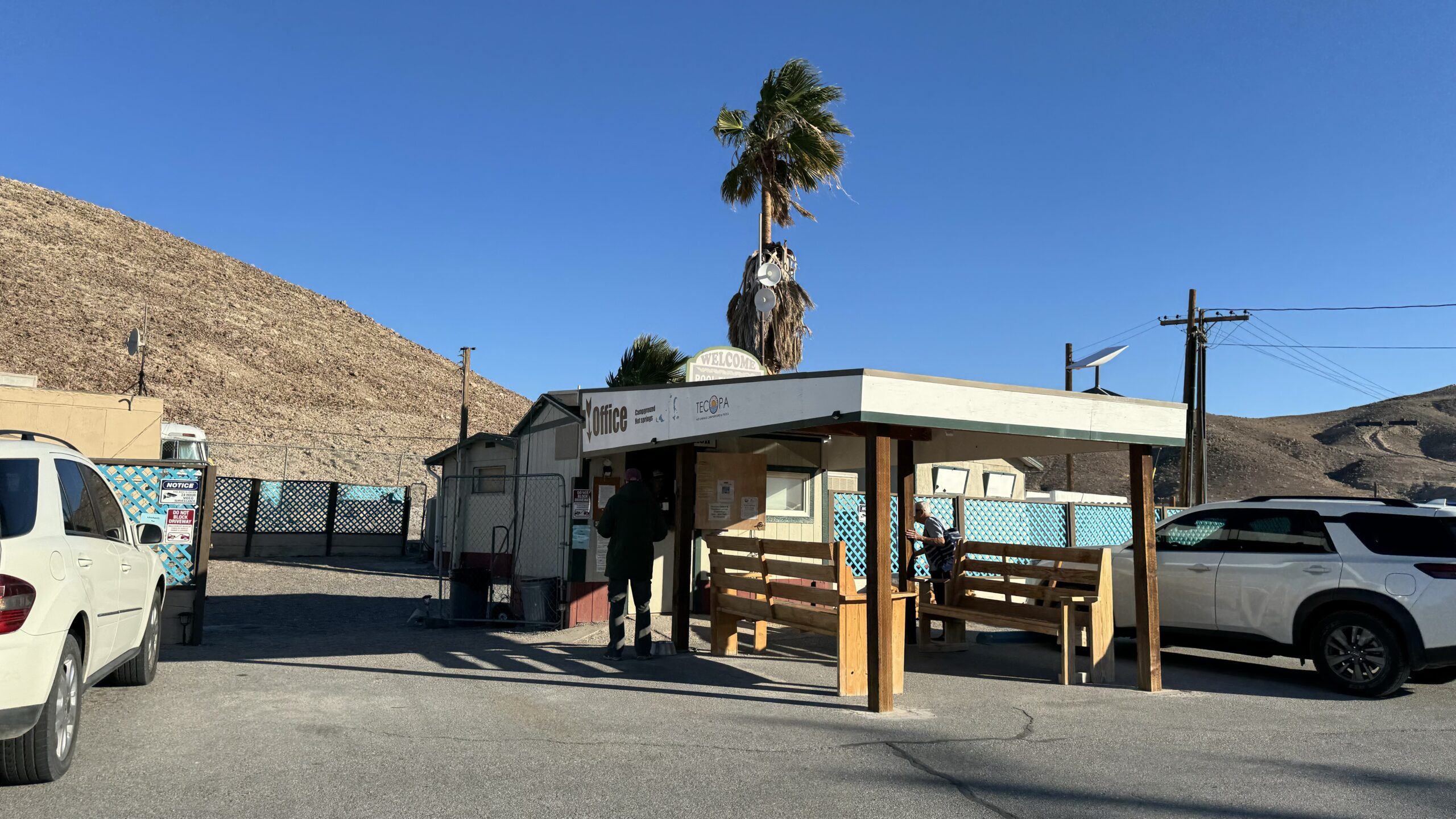As Inyo County prepares to select the next operator for Tecopa Hot Springs Park, prospective applicants would do well to study the evolution of the concessionaire agreements that have governed the site over the past two decades.
Two contracts in particular—the 2004 agreement with California Land Management (CLM) and the 2021 renegotiated contract with Tecopa Hot Springs Conservancy, LLC—offer a clear arc: from rigid, risk-heavy expectations to a more collaborative and adaptive approach designed to meet real-world conditions. These documents have been released as part of the procurement process.
2004: Revenue Ambition, Rigid Structure
The 2004 contract with CLM was financially ambitious and structurally strict. Inyo County required an escalating annual fee structure, beginning at $1,500 or 1% of gross revenues and increasing to $5,000 or 5%, plus an additional 10% of any gross income over $200,000 (which county records suggests they barely hit in 2012). This effectively tied the operator’s obligations to revenue growth—regardless of actual conditions on the ground.
CLM was also responsible for all infrastructure maintenance, capital improvements, insurance, utilities, and operations, including bathhouses and a small retail store. In return, the County retained extensive oversight: approval of all pricing, inspection rights, and enforcement authority over health and safety standards. A capital improvement plan was baked into the contract, with annual planning required between the County and the operator.
The model prioritized revenue extraction and compliance but offered little flexibility if conditions changed. While this approach brought initial upgrades and structure to the site, it also proved brittle when realities diverged from projections.
2021: Adaptive Contracting in a Post-COVID Landscape
By contrast, the 2021 agreement with Tecopa Hot Springs Conservancy, LLC—renegotiated during the pandemic—reflected a significant philosophical shift. Instead of escalating fees and revenue percentages, the County agreed to a flat $5,000 annual payment, waived entirely for the first two years due to COVID-related losses and costly infrastructure failures.
This new contract emphasized cooperation over control. Maintenance responsibilities were clearly delineated, particularly regarding water systems, sewage infrastructure, and electrical service. Regular meetings between the County and concessionaire were built into the agreement, along with clearer protocols for community complaints and project planning.
While the County retained rights to audit financials and approve pricing, the overall tone of the agreement suggested trust and continuity rather than transactional oversight. In exchange, the Conservancy committed to a defined set of physical improvements and a higher degree of transparency.
Exhibit A to the agreement, amended in 2023, outlines many of these priorities:
- Plumbing and Restroom Upgrades: Full replacement of campground restrooms and plumbing, including ADA-accessible showers.
- Fire Rings & Picnic Areas: Installation of metal fire rings and concrete picnic tables in permanent sites.
- Accessibility Improvements: Paving bathhouse pathways for ADA compliance and lowering restroom dispensers.
- Infrastructure Stabilization: Stabilizing RV electrical ports, removing outdated GFCI units, and upgrading electrical panels. (In 2025 the county took on responsibility for this upgrade.)
- Dump Station Protection: Adding a backflow prevention device to prevent chemical intrusion into the wastewater system.
- Pool Monitoring: Daily bromine readings for the mineral baths, submitted weekly through a County portal.
2025 Request For Proposal: Ambition Meets Realism
The 2025 RFP builds on this more adaptive approach while setting clearer expectations for improvement. Rather than emphasize lease payments as the core measure of success, the county now offers financial incentives for meaningful capital investment. Proposers are explicitly allowed to request partial or full rent forgiveness in exchange for site improvements, provided they propose a budget, timeline, and concept plan.
This new framework reflects several key shifts:
- Evaluation Rubric: Only 5% of scoring is tied to revenue projections. Greater weight is given to operational planning (20%), improvement proposals (20%), and business viability (20%). Experience, marketing strategy, and community fit round out the scoring.
- Local Benefits: Operators must provide discounted rates to year-round residents of Tecopa, Shoshone, and nearby communities.
- Service Scope: The RFP mandates basic services—bathhouse operation, campground hosting, RV dump station maintenance—and invites optional services like retail, gear rentals, or long-term RV storage. Some county services, like sewer lagoons and the adjacent community center, are explicitly excluded.
- Performance-Based Payment Options: Respondents may propose flat fees, revenue shares, or hybrid payment models, but the county makes clear it is open to forgoing payments altogether to incentivize public-serving upgrades.
- Transparency Requirements: Proposals must disclose lawsuits, financial history, and conflicts of interest. Insurance minimums are specified in detail. The county also reserves the right to request full policy documents, not just certificates of insurance.
Lessons for the Next Operator
The contrast between these agreements offers valuable insights into what Inyo County values—and what future concessionaires should prepare for:
- Flexibility Matters: The 2004 agreement’s rigidity left little room for error or adaptation. The 2021 model allowed for responsiveness to economic disruptions and infrastructure realities.
- Maintenance Clarity Is Critical: Past ambiguity over maintenance responsibilities led to friction. The newer contracts include detailed accountability frameworks.
- Modern Agreements Are Adaptive: The County now recognizes that concessionaire success depends on mutual investment, clear communication, and shared problem-solving—not just rent collection.
- The Focus Is on Stewardship, Not Speculation: The 2004 contract treated the park like a revenue generator. The 2021 agreement and 2025 RFP view it as a fragile public asset.
- Cleanliness and Compliance Are Non-Negotiable: The County expects transparency around water quality, daily operational diligence, and visible care for public infrastructure.
- Specificity Matters: Vague promises won’t suffice. The amended Exhibit A demonstrates that the County is moving toward concrete deliverables—and will likely expect the same in future agreements.
Beyond contractual language, what’s at stake is the continued accessibility and care of a public resource deeply tied to Tecopa’s local identity and economy.
When the clock strikes 5 p.m. on August 15, the County won’t just be closing in on a bidder—it will be choosing who gets to write the next chapter in the long and storied life of Tecopa Hot Springs Park.


Leave a Reply